After a three year absence from InterBike, I decided that rather than aimlessly roaming the labyrinth of booths I would purposely seek out only the product in which I already had interest. Now that cyclocross season is on and the disc brake question already decided, we can go back to the cyclocross racers traditionally fave topic: tyres. Specifically, I wanted to see what was available now that the majority of companies had finally gotten onto the tubeless bandwagon.
Tubeless tyre development has been annoyingly misguided when it comes to non-mountainbike applications. Whether it be road, cyclocross, or the newest trend of gravel” (aka “all-road”, “adventure”), several companies or collaborations thereof have tried to bend the industry to their own design parameters but have fallen short of re-making the market in their own image. To date several similar and (in practice mostly interchangeable) standards have emerged. Shimano and Hutchinson pioneered road tubeless as a rigidly defined set of standards for rims and tyres which have nonetheless proven heavy and overly demanding on rim/tyre bead tolerances while also tethered to now-outdated fashions of (narrow) rim width. Ultimately the market has mostly abandoned the original road tubeless standard for tyres bigger than 28mm in favour of lighter and more forgiving designs, though the downside is that theres not much to reign in varying tolerances across the industry. Regardless, the newer designs mostly rely on liquid sealant to prevent air leakage and a contoured well inside the rims tyre cavity to aid in seating the tyre bead. These tyres are variously named tubeless ready, sealant compatible, and now tubeless easy among other phrases. The rims that they best fit have been heavily influenced by Stans NoTubes wildly popular rim designs.
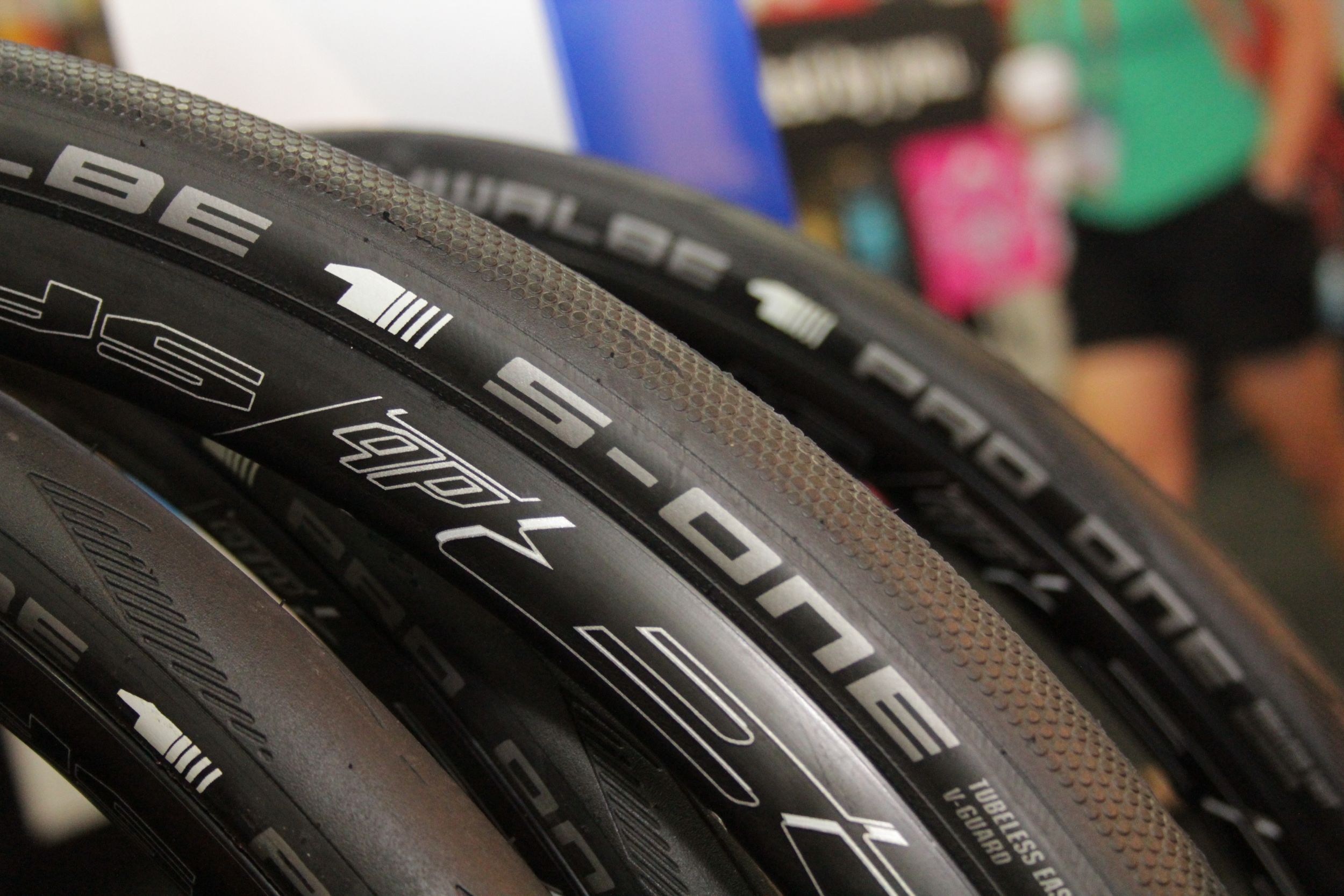
Schwalbe Paris-Roubaix worthy S-One 30mm tubeless clincher
Initially developed more than a decade ago, the original road tubeless standard was designed around 23mm road racing tyres and ~20mm wide (~16 internal width) rims, typical at the time. Keep in mind that this predates the big cyclocross boom that came in the later 00s, so 30mm plus tyres were not at all at the forefront of product development. As cyclocross became an important segment, many innovators were eager to apply the knowledge and lessons gained with tubeless in the mountainbike realm. Now with the fast growing interest in so-called gravel bikes, theres even more potential to capitalize on tubeless in wider casings. In fact, the once assumed racing standard of 23mm race tyres has rapidly been losing favour to 25mm, and all recent road rim designs have drifted towards 23-25mm (external) width rims.
If anything, these trends have allowed tubeless technology to naturally gravitate to applications that can most benefit from its particular characteristics. Despite the early focus of road tubeless, todays standard clincher tyre in the 23-25mm racing size range is impressively light even when combined with an inner tube, while generally a tubeless tyre in the same size is comparatively heavy and not-so supple casing. Yet a ~35mm tubeless ready tyre can really shine without the burden of a big inner tube while still being reasonably supple. And of course, tubeless tyres don't suffer from pinch flats like conventional clinchers when ridden at the low air pressure typical of cyclocross racing. Given how obviously cyclocross tyres could be improved with tubeless technology, it is hard to comprehend why the entire clincher market for cyclocross did not go tubeless 3-4 years ago while just within the last season most of the same manufacturers have been able to pull 27.5+ designs out of their ass overnight. On the other hand, since many existing, conventional cyclocross clinchers made for halfway acceptable tubeless conversions, perhaps that somewhat softened the immediate market demand for dedicated tubeless designs. The demand for 27.5+ tyres is certainly driven by OEM market for all those 27.5-plus mtn bikes that product developers have decided will be the next big thing after fatbikes.
With a slew of product coming from mainstream manufacturers, MY2016 is set to be the year that tubeless tyre technology makes its ascension in the arena of cyclocross and gravel tyres, the thick end of the skinny tyre spectrum. Schwalbe, Maxxis, Clement, and even IRC have some sexy looking treads.
German company Schwalbe has gone all in for tubeless, from narrow racing 23mm up to brutish gravel 40mm options. Themed One across the board, the road racing models are named Pro One. Frankly, I couldnt care less about 23 and 25m tubeless tyres, but the 28mm version is right in my strike zone. Compared to all the other tubeless tyres I scoped at Interbike, this is the lightest and has the smoothest tread. With Schwalbes MicroSkin casing, this should be a fast option for performance road bikes that are a little generous on tyre clearance. The S-One is modern classics tyre fit for Paris-Roubaix. At 30mm, this is really for the new generation of endurance road bikes with disc brakes that, freed from the tyre clearance issues caused by the decades long industry fashion of eschewing long reach rim brakes, have sufficient room for rough-road rubber. The S-One uses a moderate dot matrix tread. The G-One gravel tyre has courser, more raised dot pattern and comes in 32mm and 40mm options. The smaller G-One would be the choice for riders with a cyclocross frameset designed around UCI tyre regulations, while the larger size is more in line with recent gravel-focused frame designs. Lastly, Schwalbes X-One is designed for performance in the mud, with a tread of tall, siped knobs in the center of the tread that grow smaller in the transition to siped, oblong knobs on the shoulder.
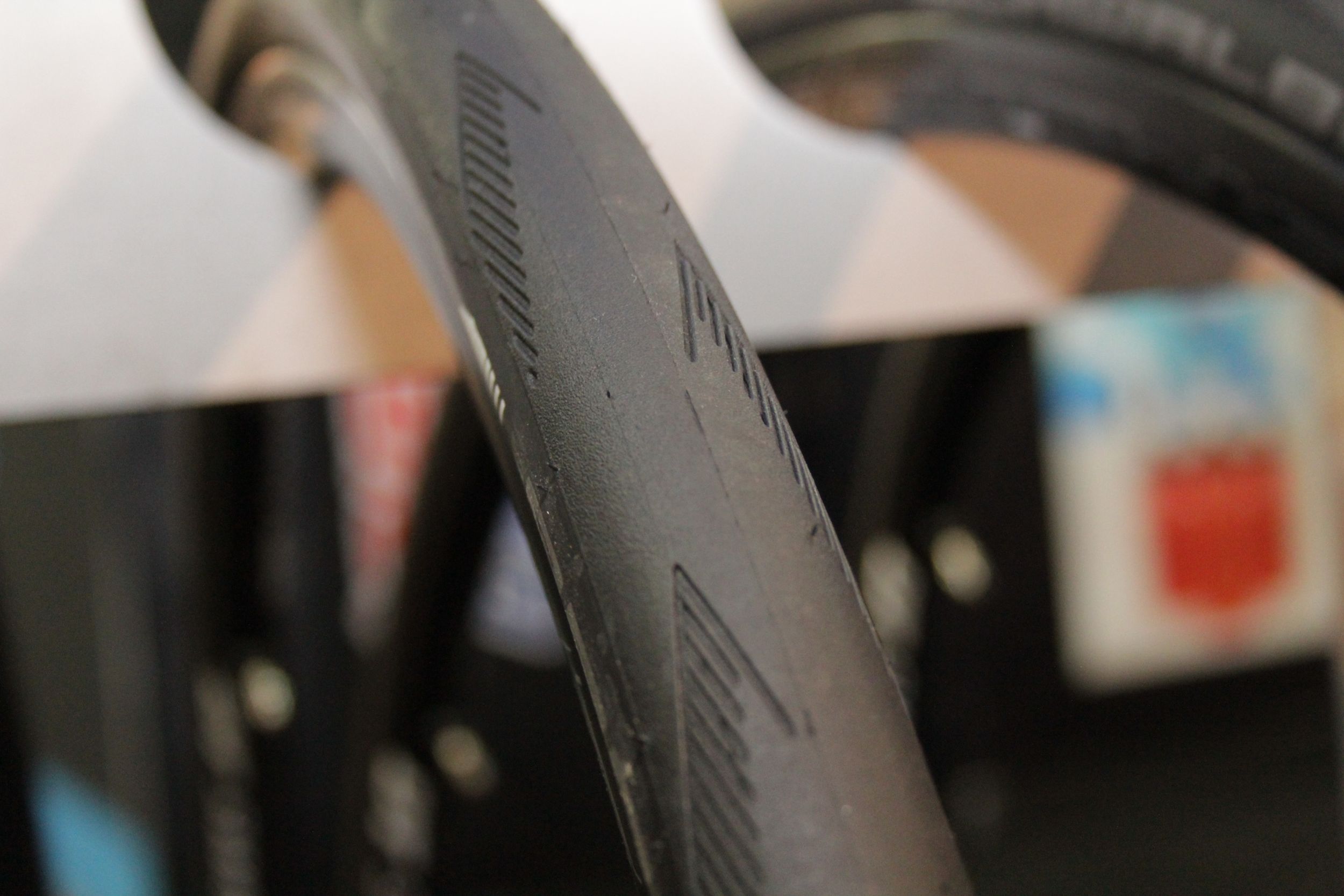

Schwalbe Pro One tubeless road clincher 700 x 28
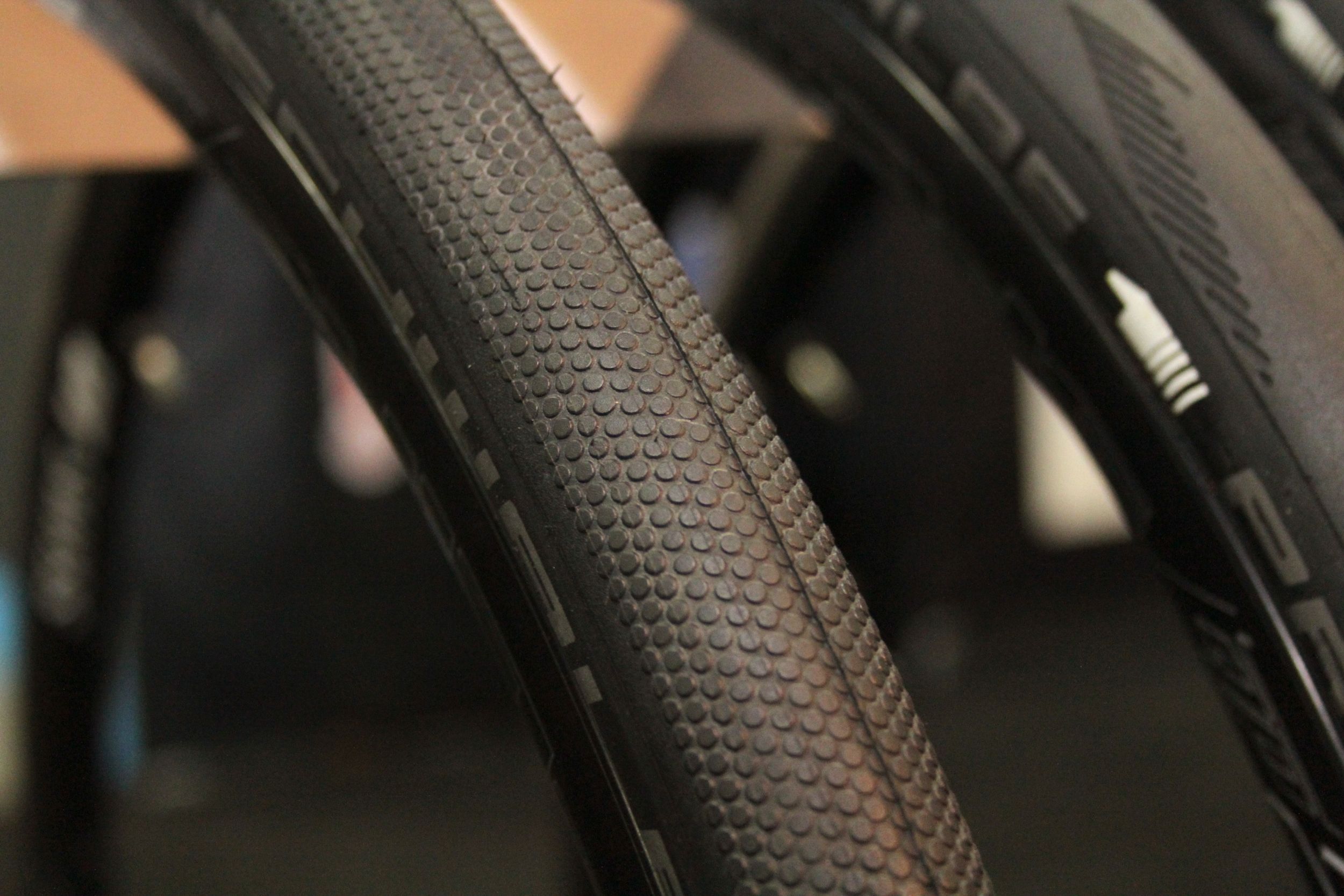
Schwalbe S-One 700×30 road tubeless clincher

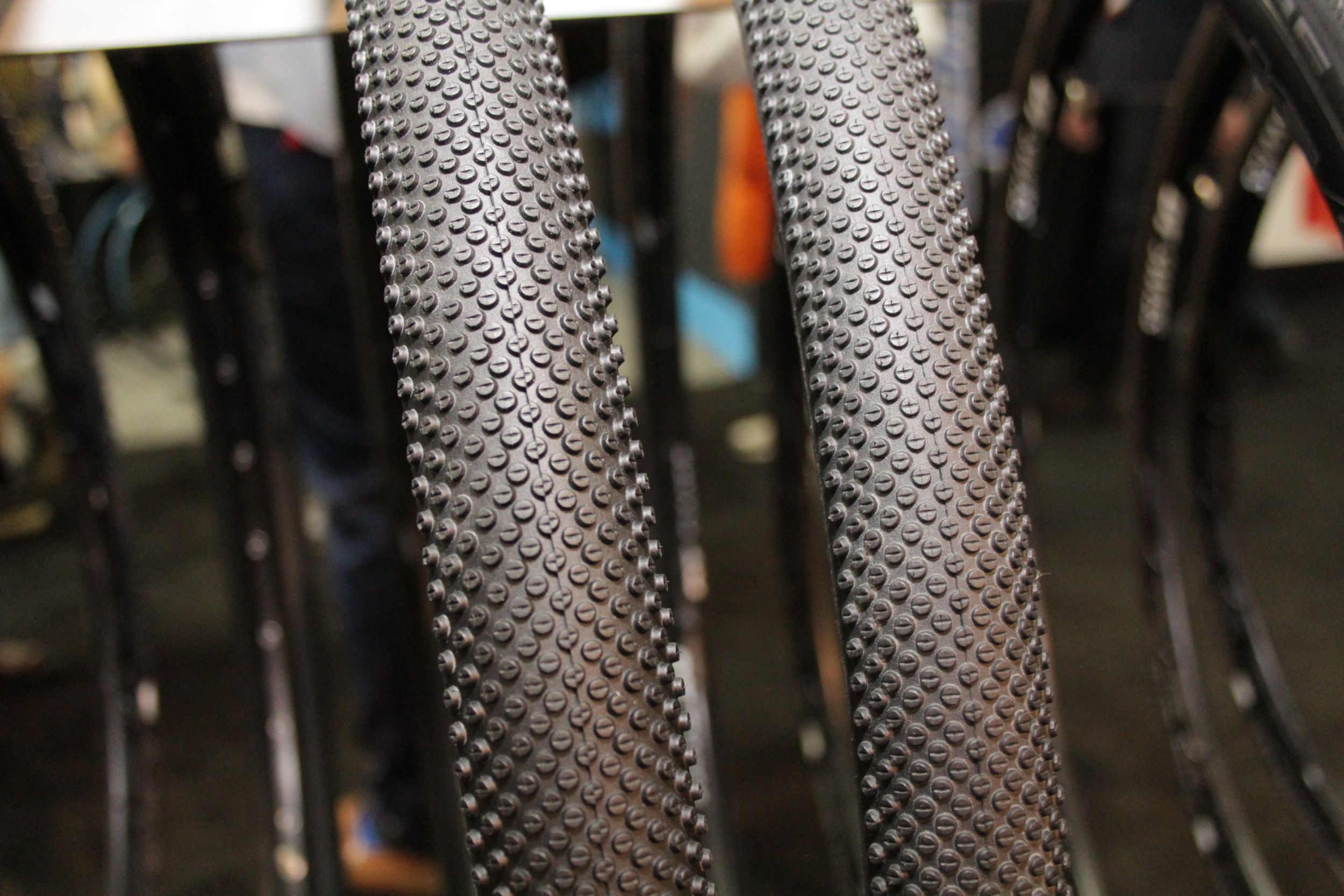
Schwalbe G-One tubeless gravel tyre comes in 32 & 36mm versions

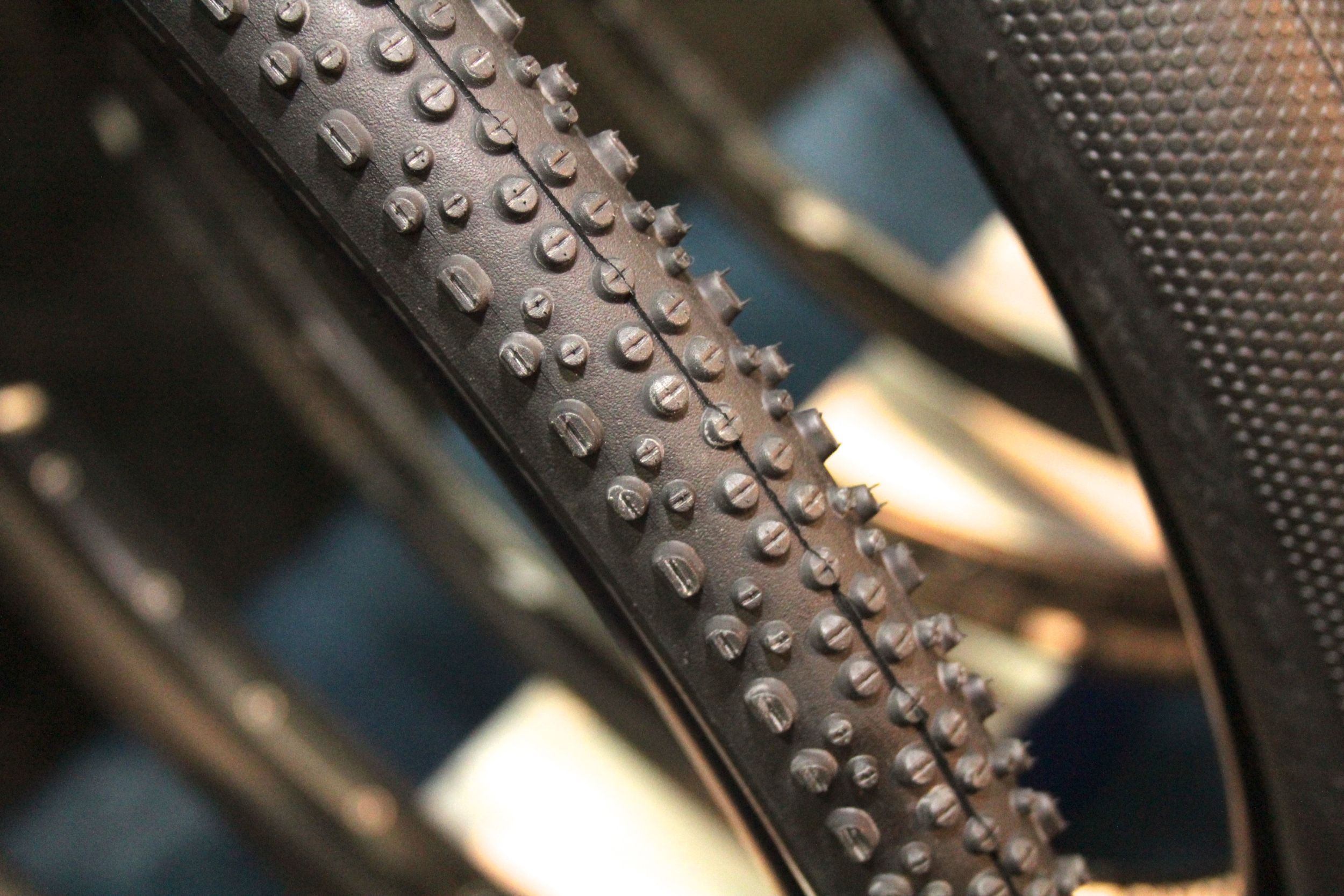
Schwalbe X-One cyclocross tubeless clincher
Maxxis got a little bit of a head start last year when they rolled out their tubeless ready version of their Mud Wrestler. I have found the Mud Wrestler TR to be a solid all-around tyre that still clears mud well when it gets truly sloppy. This year Maxxis adds a gravel tyre called the Rambler, its tread consists of a variety of rectangles and blocky shapes with both textured and hollowed centers. With a low-ish height and tight spacing, the 40mm casing is available in both 60tpi and 120tpi versions. Maxxis updated their Re-Fuse model with a larger size (40mm) and tubeless ready construction. Its fine diamond-pattern tread promises low rolling resistance, though perhaps at the expense of traction and control in softer conditions.
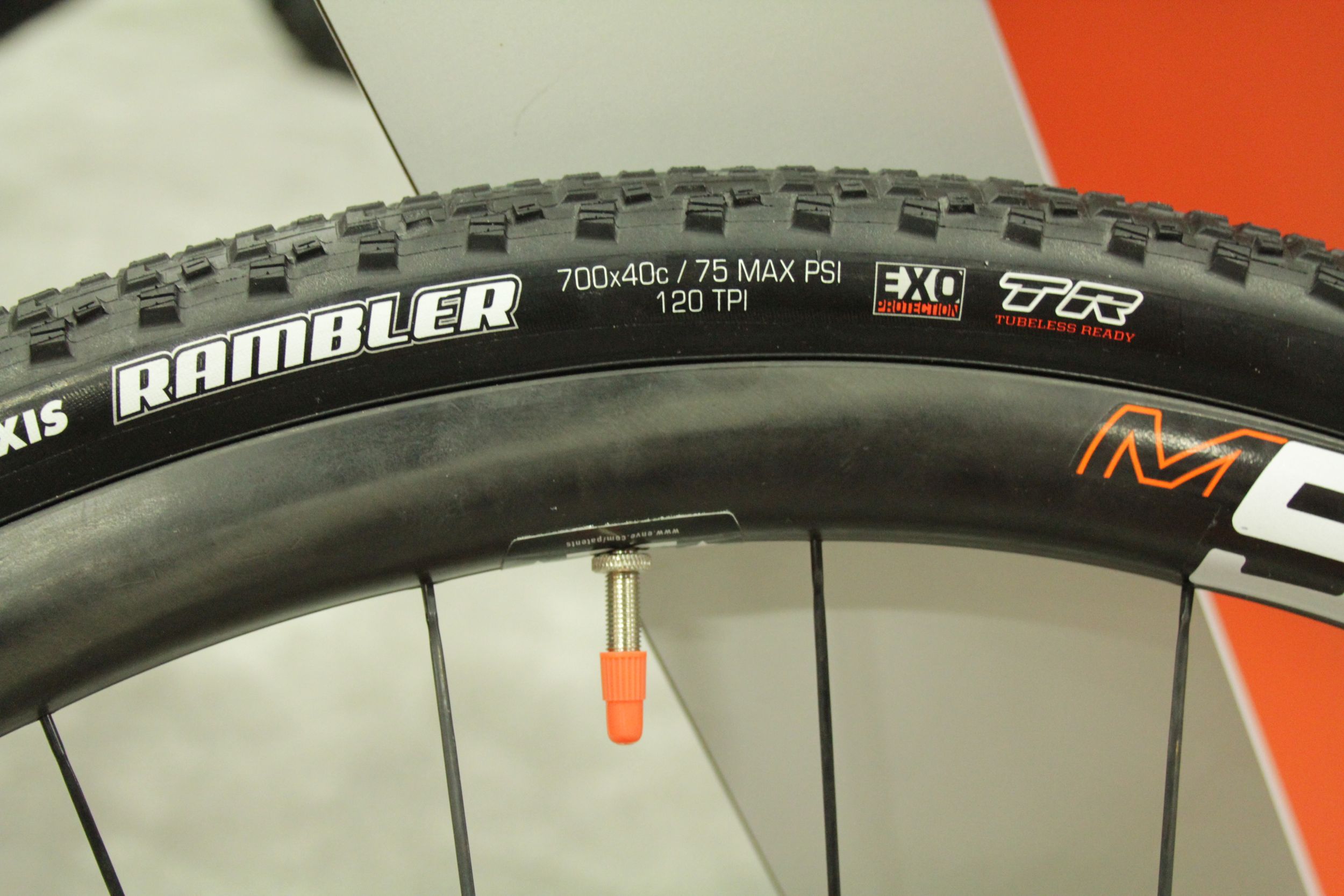
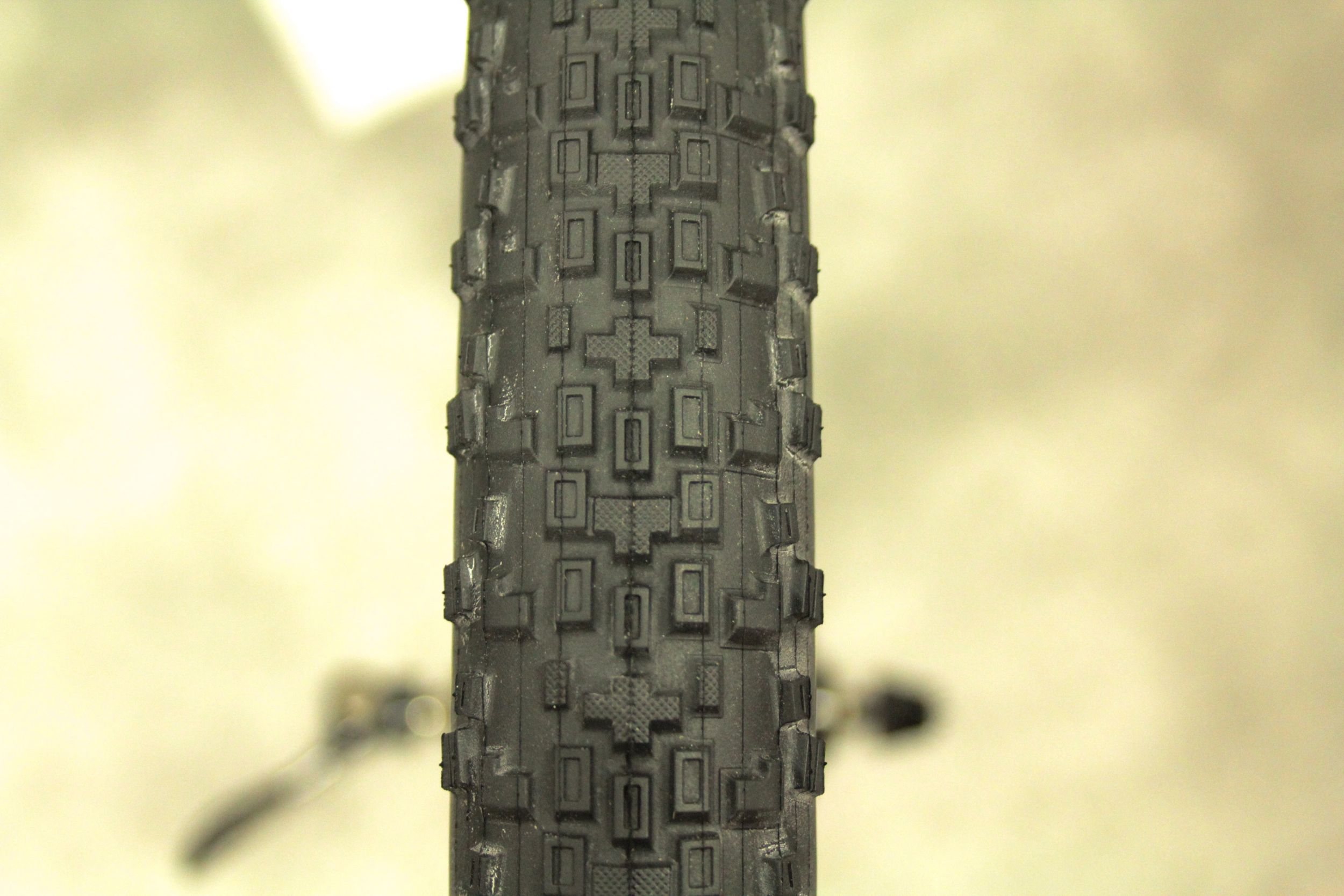
Maxxis Rambler 700×40 tubeless clincher for gravel
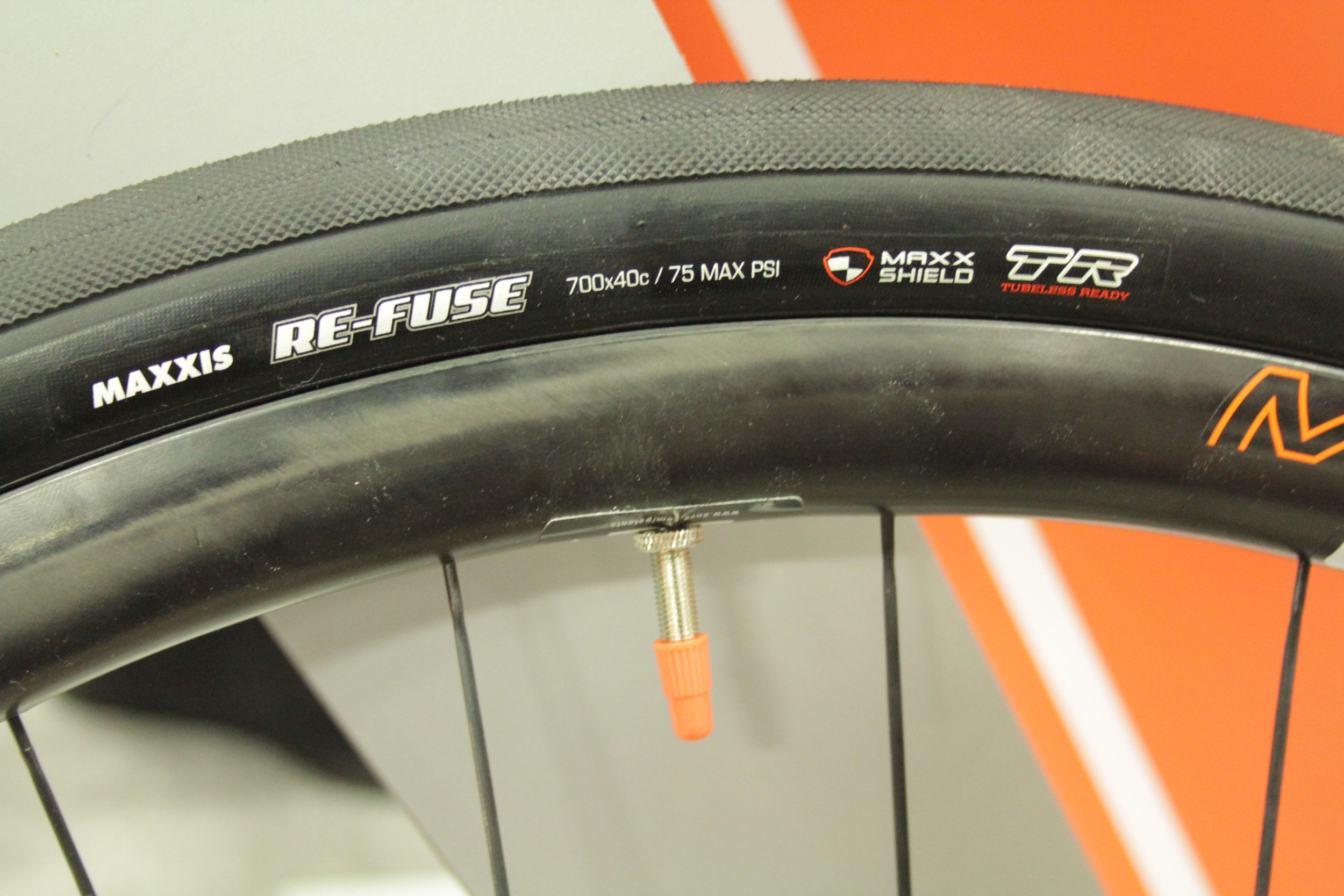
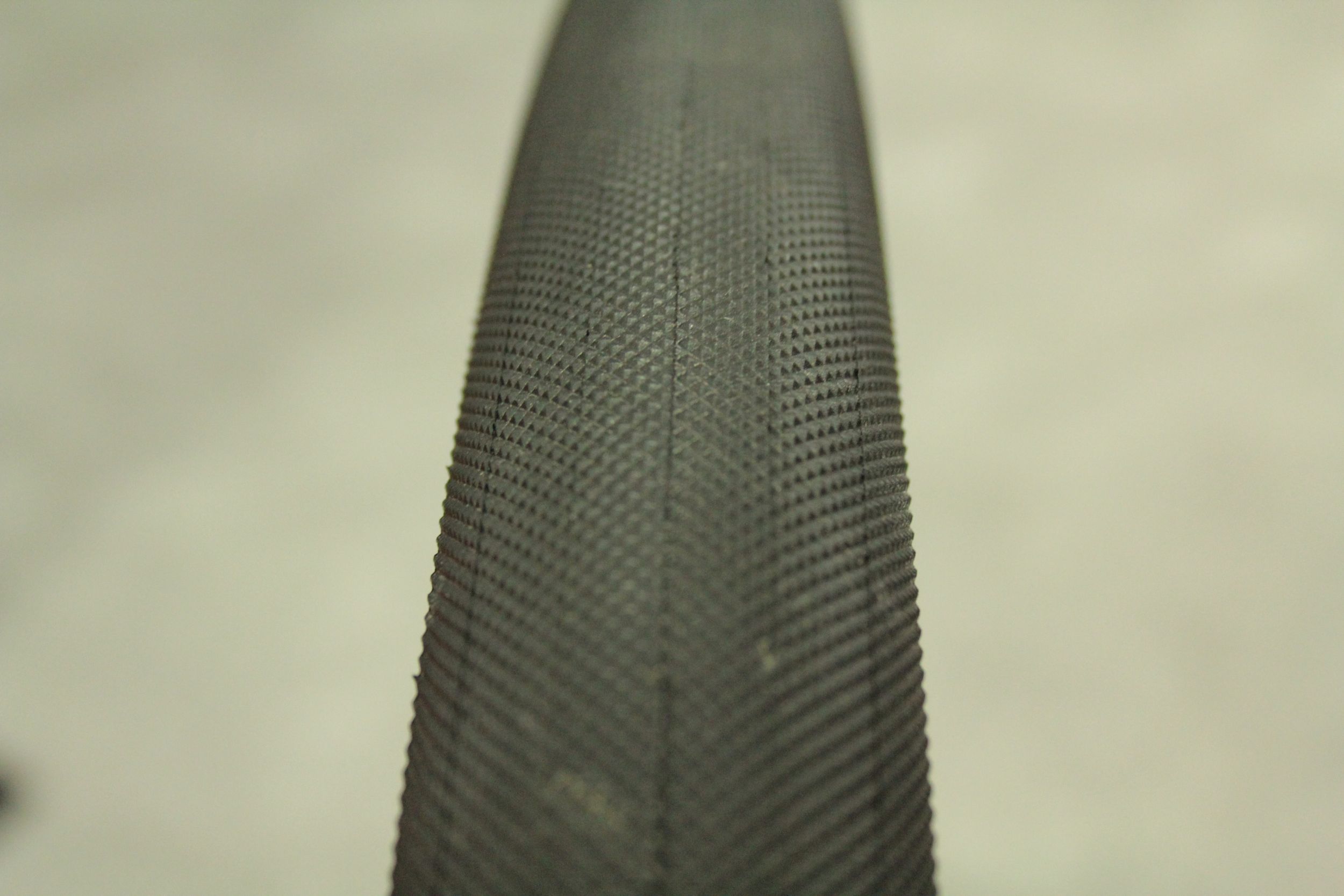
Maxxis Re-Fuse 700×40 all-road tubeless clincher
IRC is not a company that Ive made any effort to follow in the past, but I had to loop around for another pass at their InterBike booth. The Japanese company had three different treads for tubeless on display for cyclocross. The Serac CX (32mm, 380gr) has a center of alternating angled blocks with smaller side blocks on the shoulder. For full slop conditions, the Serac XC Mud (32mm, 380gr) has taller angled blocks widely spaced and arranged in opposing pairs in the center, while the side knobs are still closely spaced but longer. The Serac CX XR (32mm, 375gr) is something of a throwback to traditional cyclocross dry conditions tyres, with a course diamond matrix devoid of any side knobs like more recent designs from Challenge, Tufo, and Clement. Even more of a time warp, IRC showed displayed a 28mm version of the Serac XR that harkens back to the 1980s when cyclocross tyres were typically barely wider than road tyres. It is somewhat odd that IRC didnt bring out a more voluminous version to take advantage of the current gravel bike trend.
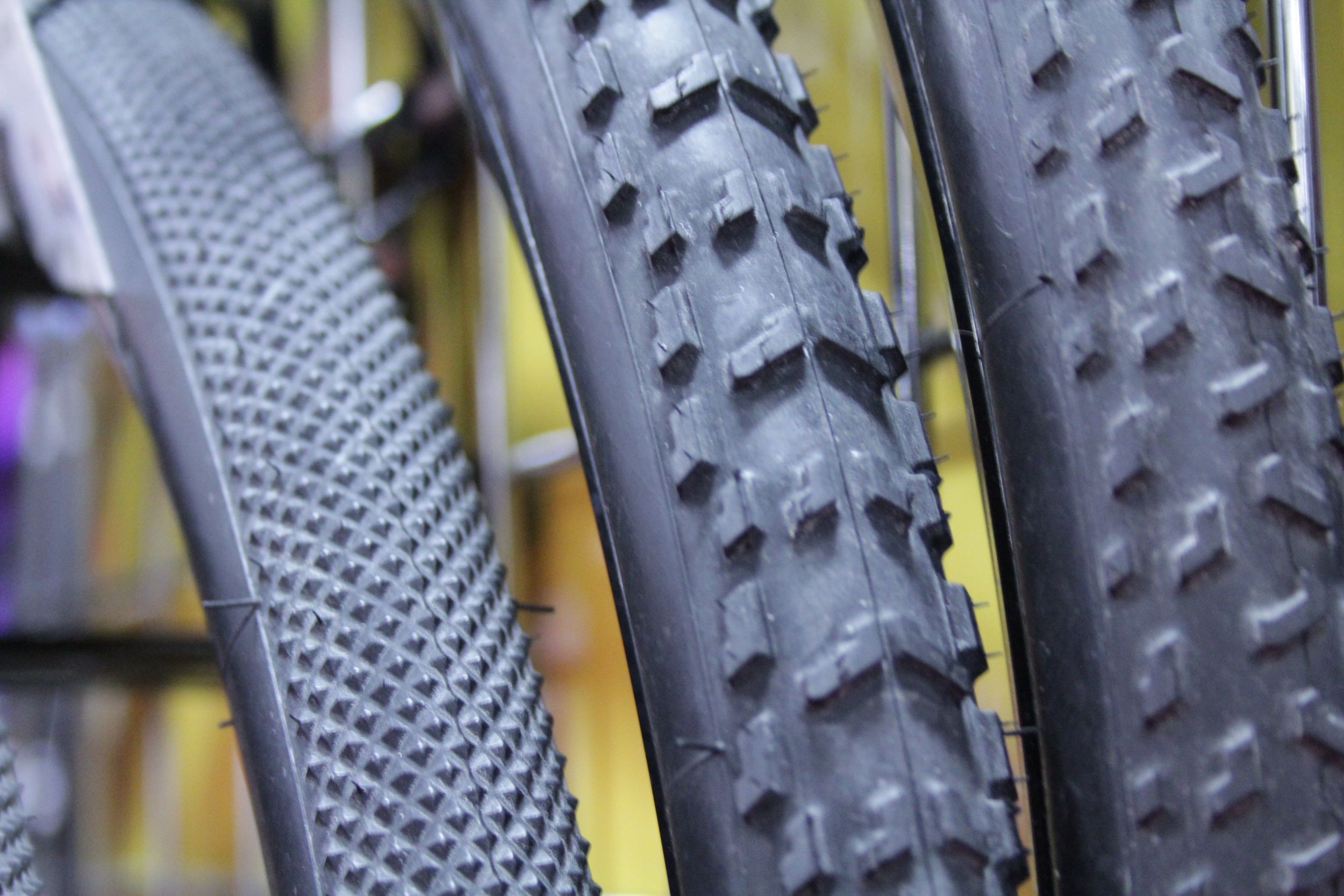
IRC Serac cyclocross tyres (Sand, Mud, standard versions (l-r)
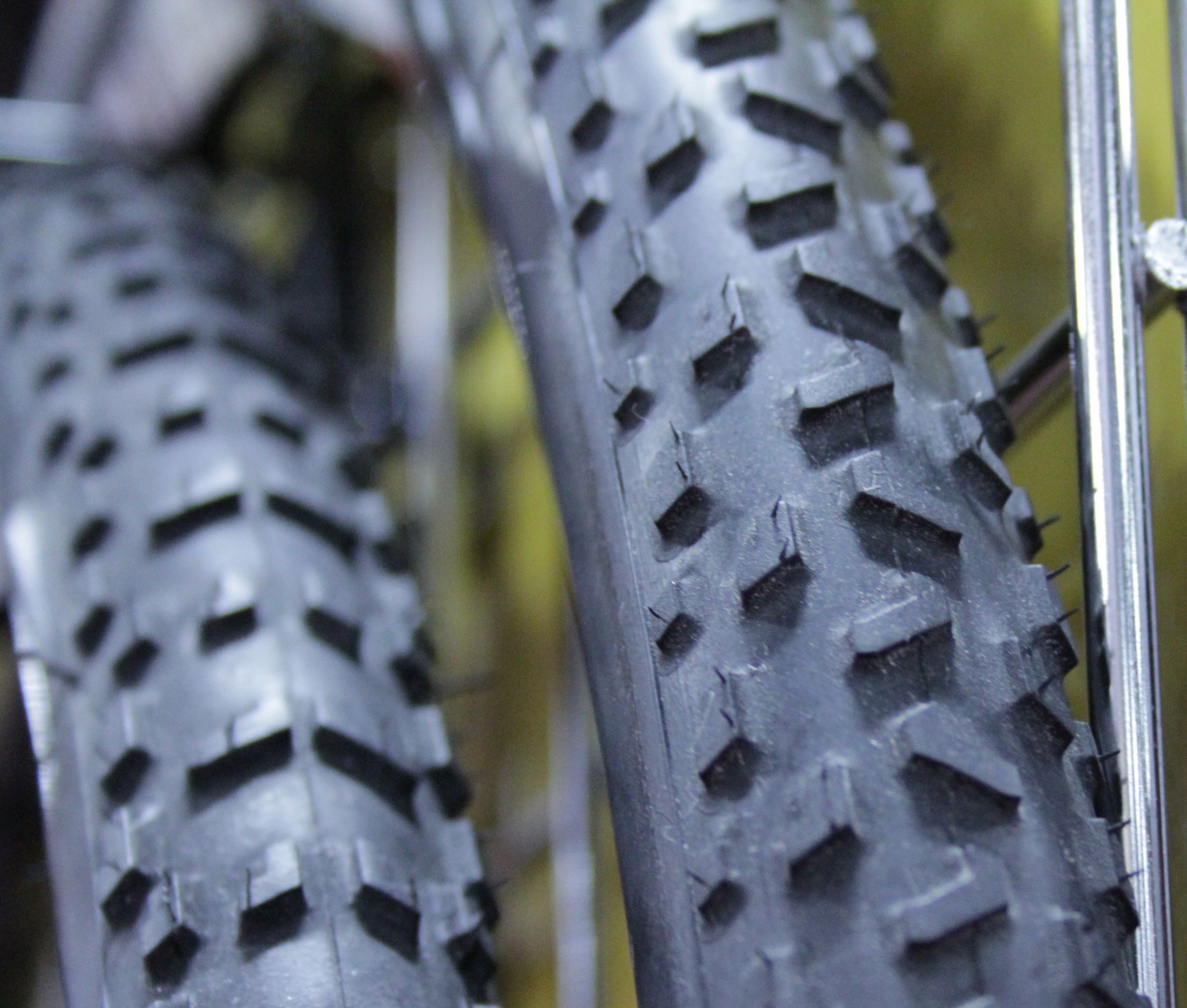
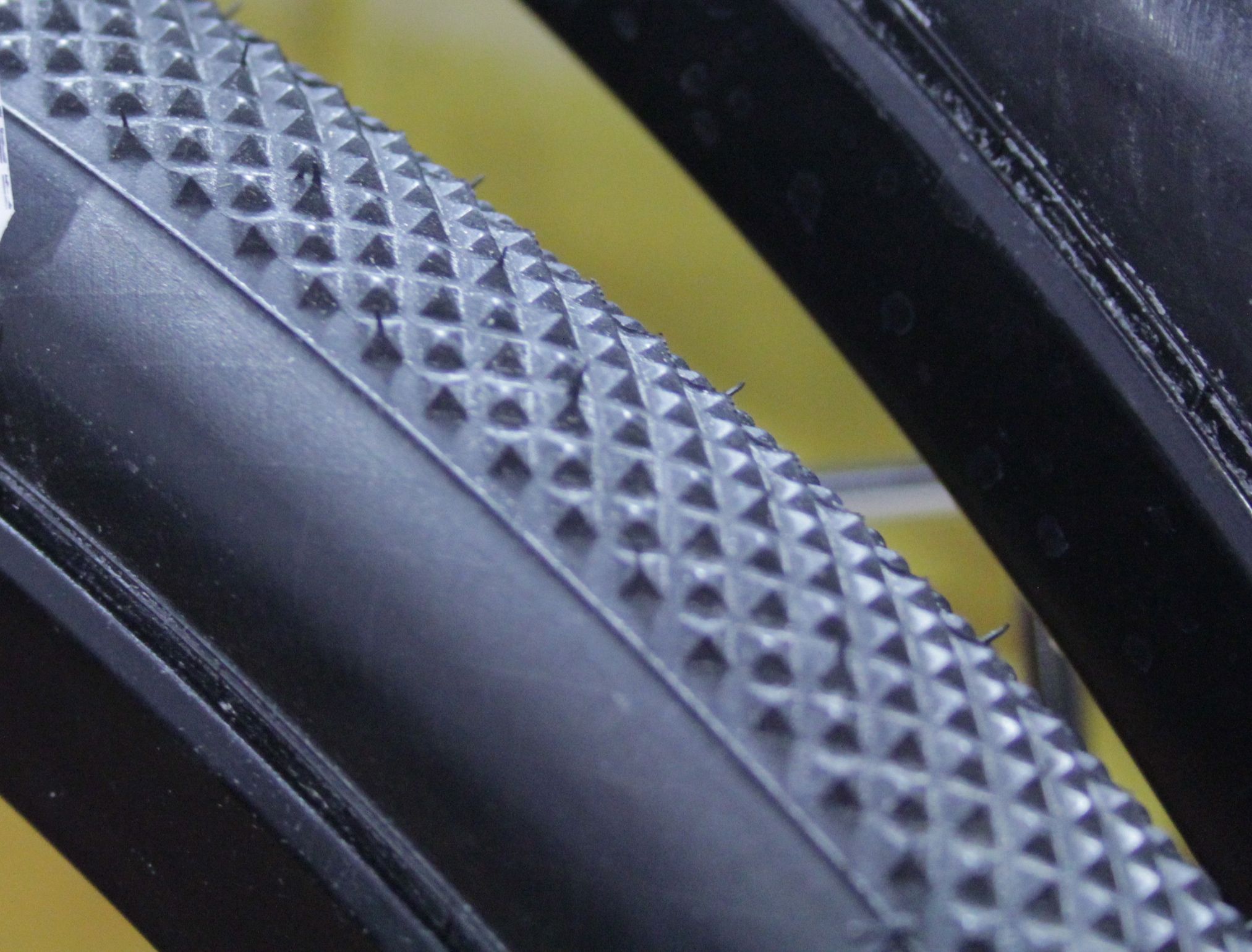
Kendas Flintridge Pro gravel tyre is available in 35 and 40mm sizes. Having made the Kenda Happy Medium my choice for gravel and grass/dry cyclocross racing for the past two seasons, I wonder how the Flintridge will actually measure when mounted. My 35mm Happy Medium is more like 38mm on a HED Belgian Plus rim (25mm external), too big in fact for adequate clearance in the rear triangle of my cyclocross bike. Similarly, the 32mm HM mounts up at almost 35mm. In contrast, the Maxxis Mud Wrestler TR is right on the UCI-limited 33mm even on a wide 25mm rim, and Clement specifically designs their tyres on appropriately wide rims. These are important considerations if you are looking to race UCI-sanctioned races or if your gravel bike is not overly generous for tyre clearance.
If any company has gotten direct requests from users for tubeless, it is Clement. Their all-around MPX and mud-loving PDX tubulars and clinchers have become instant favourites on cyclocross courses, while their EXPLOR MSO and USH clinchers have helped shape the gravel tyre market. However, attempts to adapt their standard clinchers to tubeless have met with decidedly mixed results, as evidenced in numerous message boards across the web. Certainly no market research has been necessary to conclude that fully tubeless-ready Clement tyres would be hot sellers, but apparently it has taken the company some time to get the moulds developed and product proofed. So much so that the eagerly awaited MPX and PDX tubeless models wont be available until February, well after cyclocross season will have ended. In the meantime, the company expects a 36mm tubeless version of their MSO gravel tyre in November.

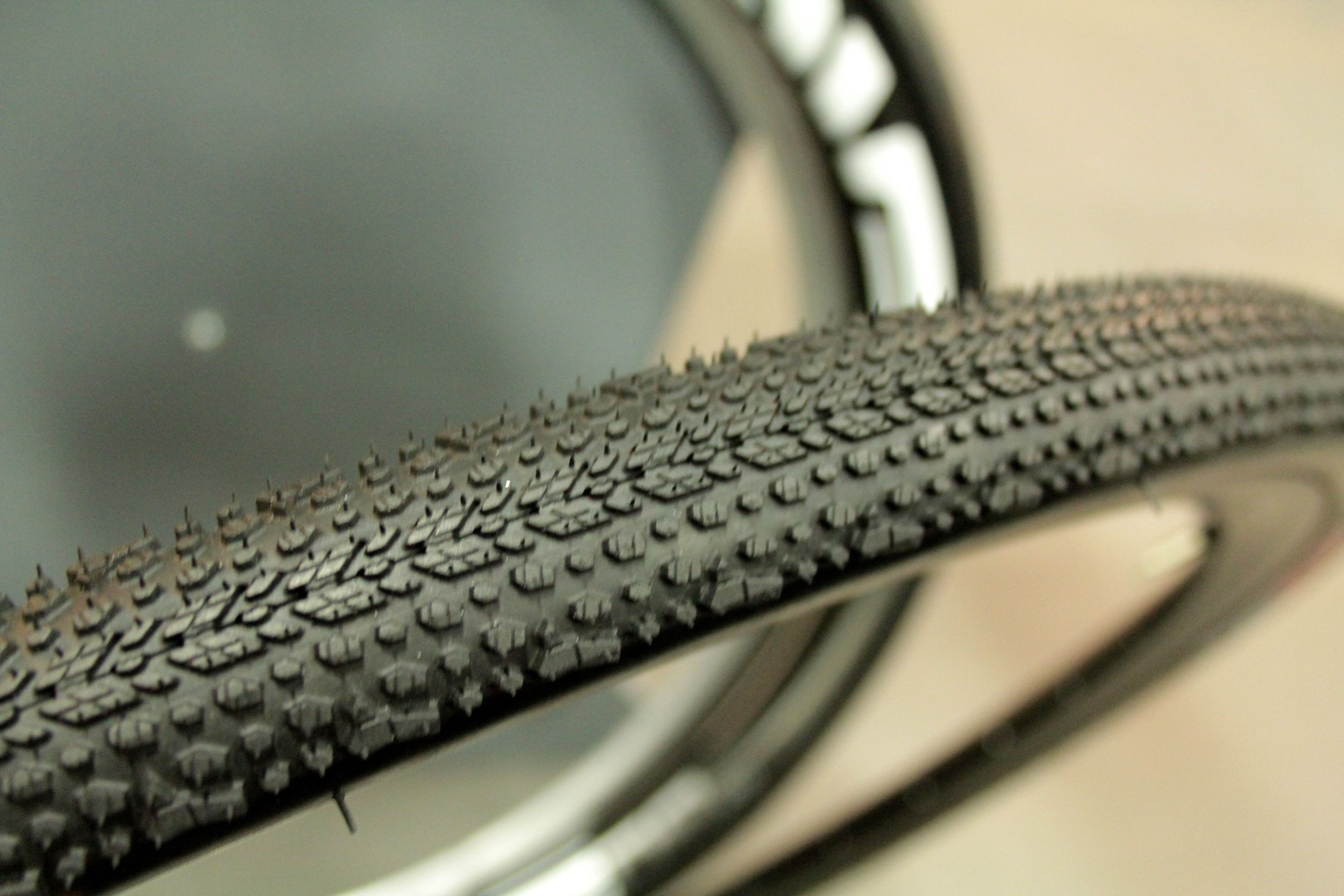
If theres one surprise from Clement, it is that they are bringing out a tread designed for even nastier conditions that the PDX, which is already well-regarded in the mud. Named after the airport code of Bostons Logan airport (all Clement cross & gravel tyres take their names from airport codes), the BOS tread is all about tall paddles down the middle with buttressed side knobs and relatively open transtion. But like the others tubeless CX tyres from Clement, dont expect availability for the current season of cyclocross. Personally Im eager to try this one out. My initial impression is that this BOS would be the choice for really wet, soupy conditions whereas the PDXs cows foot knobs would be better for thick, sticky mud, but Clement's Johs Huseby explained that the really aggressive side knobs will make for excellent traction on off-camber sections. And for cyclocross racers without an unlimited budget for wheels, tubeless cyclocross tyres allow one to swap out tread patterns with ease.
Suppose that one has one cyclocross bike and two tubeless wheelsets. In the Pacific Northwest, you'd start the season with one wheelset each of file tread and medium conditions tread, and then change the selections out as the season progresses. Mid-season I would bring a medium conditions setup and a mud tread option as the fall weather starts to soften the courses. Depending on El Nino and other things, I could be ending the season by bringing something like a Clement PDX setup and a BOS option in case Sunday's race weather forecast calls for wrath of god with slight chance of Armageddon. To have that versatility with tubular tyres, one would need three or four wheelsets per season and a LOT of time to prepare them. Tubeless clinchers give about 90% of the performance of tubulars at half the cost per tyre and an eighth of the effort.

The new Clement BOS CX mud tyre from Clement. Unfortunately, it won't be available until after the 2015-16 cyclocross season
Of all things, no one has clearly explained to me why Michelin has seemingly given up on being a player in this niche of the bicycle tyre market. Their original Mud CX clincher had a hallowed reputation in the mud, while their Mud2 has been a widely popular choice for all-around use and has been “ok” as a tubeless conversion. But it has been ages since anything else in the skinny knob theme has debuted from the French company, and nothing at all in terms of fully “tubeless ready” CX product. The other French company, Hutchinson has ceded much of the limelight for tubeless CX, while their tyre designs have perhaps been hampered by the companys fidelity to the original road tubeless standards. Regardless, MY2016 is the year that tubeless technology has made it practical for the amateur cyclocross racer to obsess over tyre tread choices before lining up in the grid.
…We're riding townies, adventure, and mountain bikes. Find recommendations on our store page. As Amazon Associates we earn from qualifying purchases.